CAMERAS, TELEMATICS & TACHOGRAPHS



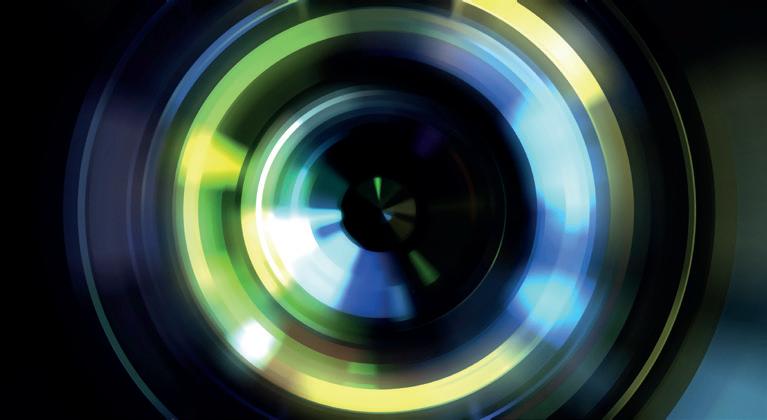
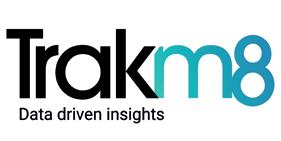



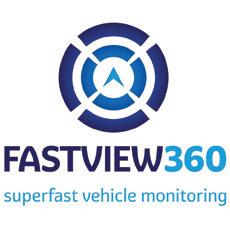












The use of cameras, telematics and digital tachograph technology is becoming ever-more commonplace on HGV fleets, and there is no doubt that safety and compliance schemes, such as London’s Direct Vision Standard and the DVSA’s Earned Recognition scheme, have played a role in their importance.




This survey aims to explore how operators’ views have changed, particularly regarding the way they are deploying technology on their fleets: reasons for using it; important factors when purchasing it; and key features available today and under development for the future.

The survey was designed for anyone with responsibility for keeping commercial vehicle fleets compliant at their business.
Research was conducted in September 2022 among readers of Commercial Motor and Motor Transport magazines and follows similar studies carried out in 2021 to the same audience.
This supplement – brought to you in conjunction with Brigade, CameraMatics, Fastview360, Hireco, Trakm8 and TruTac –looks at the way such technology is purchased and deployed, and how the market is evolving in terms of added value and features.
We hope you find this study a helpful insight into the use of this increasingly popular technology.
Editor Hayley Tayler Group production manager Isabel Burton Production editor Clare Goldie Divisional director Vic Bunby Sales executive David Dennison Managing director Andy Salter
services Abacus E-Media 020 8955 7034 cmsubs.com Newstrade enquiries 020 3148 3333 Email: RoadTransport@abacusemedia.zendesk.com Printed by: William Gibbons Distributed by: Marketforce
This report is based on a survey of readers of Motor Transport and Commercial Motor


A significant proportion of respondents (71%) have direct responsibility or influence over purchasing decisions.
Of those taking part in the survey, approximately one-third (31%) comprise chief executives, MDs, chairmen or owners/partners, while a further 24% are senior management and 20% middle management.

The remainder comprises roles such as ownerdriver, junior management and administrative functions.
Third-party logistics providers make up the largest proportion of respondents, 43%, while 37% are own-account operators.
Municipal and waste (7%) and public sector (3%) are the other significant groups, with the remainder including industries such as agricultural, recovery, contract hire businesses and maintenance/servicing vehicles.
The average size of an HGV fleet is 118 vehicles for those taking part.
Within this, there are a considerable range of fleet sizes: at the top end of the scale, 21% of
operators responding to the survey run fleets of more than 100 trucks, while 41% run 10 HGVs or fewer.
Half of those surveyed also run vans (3.5 tonnes and under) on their fleets, comprising approximately 15% of total vehicles on average.

Reported turnover from respondents this year shows an annual figure, on average, of £97.2m. Some 16% have turnovers of more than £100m, whilst at the other end of the scale, 40% of respondents this year have yearly turnovers of £10m or less.
This survey was answered by 234 industry respondents.
This survey shows clearly that four-in-five operators have recognised the necessity of buying camera and sensor equipment for their fleets, with 50% making a purchase within the past two years to keep pace with technology.

Having made the decision to use the technology, the next issue is whether cameras need to be fitted to all the vehicles in the fleet.
Almost half (46%) the operators that use cameras had them fitted to all their vehicles, but the rest were more selective.
Approximately one-in-five had cameras fitted to three-quarters of their vehicles, while another 12% had them fitted to half or more.

But, 7% of operators said they had fitted them to fewer than 10% of their vehicles.
On average, the survey showed that 75.6% of the vehicles in the survey were fitted with cameras and video technology – the same figure revealed in the 2021 survey.

Given that one-fifth of operators had no plans to use the technology, the survey explored the reasons given by those respondents.

By far the most common reason for one-third of those not engaging was that it was not seen as relevant to the operation, with smaller operators running 10 vehicles or fewer more likely to say this (40%), compared with their larger counterparts. Cost was also an issue, with onequarter of those not using camera technology stating this was a main barrier.
Similar to last year, a few were unconvinced of the technology benefits, with 14% of those not yet using cameras citing this as the reason why.

FM Conway is a leading infrastructure company delivering vital services in transportation, the built environment and open spaces.
As part of its commitment to road safety, FM Conway wanted a vehicle road safety system that could detect cyclists and be activated at all times –not just while the vehicle’s indicators were in use.
Although this is not a mandatory requirement for such systems, it is recommended by both the Direct Vision Standard and FORS regulations. The company was also keen to find a product that did not create numerous false alerts and result in driver overload – something that is common on many existing systems.

FM Conway transport manager Steve James says: “Brigade approached us during the early development stages of its new Sidescan®Predict collision avoidance system and asked us to trial the device on our vehicles. The system met all the objectives we had set out, so it seemed a perfect fit and ideal for what we wanted to achieve.”
Through the use of artificial intelligence, Brigade’s Sidescan®Predict constantly gathers object-detection data, such as the speed and distance of a cyclist or other vulnerable road user from the vehicle, in addition to information such as the speed, direction, acceleration, and
the turning rate of a vehicle. This data feeds an algorithm created to calculate the risk of a collision with cyclists and nearby pedestrians.

Unlike existing systems, which simply register the presence of a potential obstacle, Sidescan®Predict is constantly gathering data in a vehicle’s vicinity. This provides benefits to operators by significantly reducing false alarms and increasing confidence in the accuracy of warning alerts.

Greatly lessening the risk of fatalities Designed for most rigid vehicles, including box bodies, tippers and mixers, Sidescan®Predict comprises six sensors that have a detection area of 2.5m, compared to the industry standard 1m to 1.5m. These features help to reduce the risk of fatalities by an additional 84%.
James adds: “We worked with Brigade for more than six months on the project and we now have approximately 40 systems fitted to our grab and tipper vehicles that typically travel more than 1.3 million miles a year.”
FM Conway driver Dave Thomas says: “As a driver your worst nightmare is an incident on the nearside blind spot. This system gives me peace of mind and there is no way I would want to drive a vehicle again without this device fitted to it.”
For more info, go to brigade-electronics.com

Improving safety standards remained the predominant reason (71%) for operators installing cameras and sensors on fleets. However, hot on its heels was the desire to reduce vehicle insurance costs, with 60% of operators selecting this reason – up from 43% in 2021.
Improving driver behaviour came in third place for importance of fitting camera technology, with approximately half of operators picking this option. Compliance with industry schemes was also a dominant factor for many.
London’s Direct Vision Standard (DVS), which came into force in March 2021, was a key issue for operators as all vehicles above 12 tonnes now need a safety permit to operate in the capital. The survey found that 43% of respondents purchased vehicle cameras and video technology to comply with the DVS. Not only that, three-in-10 (29%) said they fitted cameras to achieve FORS or CLOCS accreditation.
Clients were also playing an increasing role in the adoption of this technology: 9% of respondents said cameras were a contractual requirement from a client.


Several respondents highlighted the benefits of cameras in protecting their drivers from unjustified claims, including crash-for-cash scams, reckless road users and defence against spurious claims.

When it came to HGV blind spots, camera and sensor technology played a significant role in helping drivers detect vulnerable road users.
In a question from sponsor Brigade, we asked operators which blind spot caused them the most concern. For more than two-thirds of operators, the nearside blind spot was of most concern; however one-in-five said the rear blind spot was the most troublesome, while 8% cited the front and 3% the offside.

MM Freight specialises in transporting chilled, frozen and ambient goods throughout Ireland and the UK, delivering to major supermarkets.
In the cold chain dealing with temperaturesensitive food, even a minor mistake can lead to product spoilage. Inefficiencies frequently trace back to not having enough visibility into the location and condition of sensitive cargo.
MM Freight was keen to develop an innovative solution to mitigate potential risks. It wanted visibility of the internal trailer, while using renewable solar energy rather than energy from the truck engine.

The innovative solution
CameraMatics proposed a bespoke vehicle camera system that would enable end-to-end surveillance, including internal cameras fitted in the trailers, historically a dark zone in terms of monitoring of temperature-sensitive goods in transit.


CameraMatics adapted its existing solution that offered: n 360-degree view of a vehicle’s surroundings; n safer driving with automated driver selfcoaching; n operational efficiencies generated from the video telematics, on-board vehicle sensors and AI technology.

In addition to the normal setup, a second digital video recorder (DVR) and a cargo camera in the trailer unit was installed.

To address the additional energy requirements
CameraMatics installed solar panels to power the solution, generating an additional 2kWh per year.

MM Freight customers have unanimously been positive about the benefits of the system. If there is any product spoilage reported by customers MM Freight can review its enhanced video telematics data and identify the cause, if it occurred during transit, or otherwise rule out liability if it did not.
The CameraMatics system has been so valued by MM Freight customers that some use the footage captured by the trailer camera in their global training programmes for staff.
Sean Hughes of MM Freight says: “It makes it very black and white, removing any ambiguity. CameraMatics has given MM Freight total peace-of-mind. We’re fully confident in the service we provide. And now with this end-toend surveillance, we can prove what is loaded is what the customer gets back. We’re fully covered.”
Key benefits n reduce product spoilage; n video footage of products in transit; n protecting drivers from false claims; n improved training; n optimised trailer cargo space.
CameraMatics enables end-to-end surveillance at MM FreightSupported by
More than half (54%) of operators using vehicle cameras saw an improvement in driver behaviour, and 50% saw a fall in insurance claims. Other benefits included a reduction in incident reporting (32%), increased fuel economy (21%) and a reduction in personal injury claims (19%).




Further perks included better utilisation of assets, the ability to understand traffic and infrastructure abnormalities, and ease of seeing which party is at fault in the event of an incident.
On the topic of insurance premiums, there was a mixed response when it came to reductions for fitting cameras and sensors.
In a question asked by sponsor Hireco, onein-four operators had received incentives from insurance providers for use of cameras, however a similar proportion had not been so lucky when asking. And 38% had not asked their providers for reductions or incentives, while the remainder were unsure if their business had asked.
The ability to understand the environmental impact of fleet movements was another benefit cited by operators using cameras, sensors and telematics on vehicles.
In a question posed by sponsor CameraMatics asking respondents to rate the importance of environmental insight from one (no value) to five (invaluable), 22% rated this a top score and 18% scored it a four. The average rating was 3.3, providing manufacturers with an opportunity to raise awareness of benefits in this area.
Have you asked insurer about incentives for adding
Universal Tankers operates in the waste management sector, specialising in the removal and disposal of liquid waste, transportation and delivery of non-potable water and welfare site servicing.

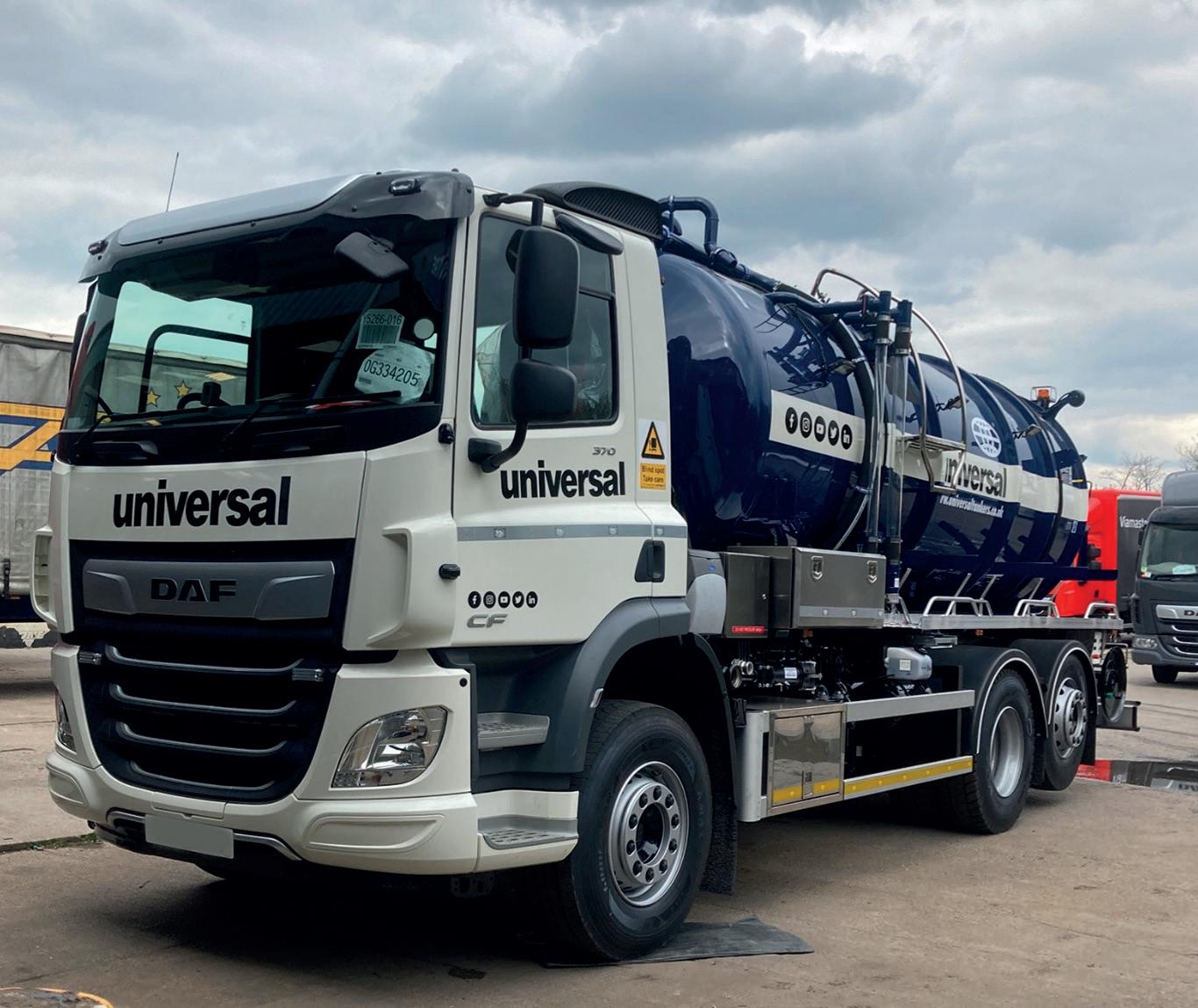
The fleet of 80 tankers are CLOCS champions and the company is a Multi Depot FORS member, putting safety at the forefront of its operations.


Universal Tankers director Simon Gunn says: “A previous supplier’s DVR had been installed and we didn’t know it was inactive for almost 12 months until we needed footage and found it wasn’t there. We couldn’t have an unreliable system.”
The fleet is now fully equipped with a Fastview360 camera system. In the last quarter, 100% of incident footage requests were successfully downloaded. Footage is available remotely to fleet managers through AutoCMS –Fastview360’s online platform.
“The simplicity of the AutoCMS dashboard gives me instant information on all camera system status. This is the confidence needed that all systems are working, compliant and supporting our drivers and fleet safety,” Gunn says.
Universal Tankers group head of transport Craig Pennington says: “At the push of a button the office is immediately informed of an incident
in progress. The driver is reassured that we can provide immediate attention and support, and an investigation can take place immediately when we’ve clarified the situation is in hand so insurers can have an accident report and claims filed promptly.
“All systems are remotely monitored and, should a problem arise, customers are notified as it is resolved. Often this is remote, however if this is not possible an engineer visit is scheduled at the customer’s convenience.
“The Fastview360 system has proved itself in many ways, saved us thousands in claims and makes day-to-day fleet management easier. All the information is to hand whether I’m in the office or on site – you can’t ask for much more.”


Advancement of camera and video technology is very fast paced, so we asked operators what they regarded as the areas most important for future camera monitor technology.

Top of the list was high-definition cameras and monitors for the third year running, which showed the continued necessity of image clarity for operators. This was rated as ‘very important’ by 61% and ‘important’ by 26%.
Another 38% scored ‘very important’ and 27% ‘important’ to the value of integration with advanced driver assistance schemes, such as lane departure warning and pedestrian detection.

Driver monitoring was regarded as a key feature by approximately half of respondents, however one-quarter did not rate this as particularly important to their operation.

The development of camera technology also holds out the possibility of replacing mirrors entirely, with the potential option to record data. This increased in popularity from 2021’s survey, with 24% of respondents rating it important, compared with 18% last year.
However, more than half still did not perceive such technology to be that important to their business at this stage in time.
A question posed by sponsor Fastview360 drilled down further into the essential functions operators would look for in future camera purchases. It revealed top attributes including:

instant notification of hardware failure; AI detection of pedestrians in a blind spot; ease of using camera portal; and video storage capacity.
With such rapid advancement in technology, we were interested to know operators’ thoughts on fully autonomous trucks on UK roads.
The results showed an almost even split down the middle for those who thought driverless HGVs were unfeasible (52%) and those who believed the technology would enable this (48%).
Of those who were open to the idea, around one-in-four thought such vehicles may be on the roads within the next 5-10 years, while a further 19% opted for a more conservative 20-year time period, and 5% felt it would take up to 50 years to see driverless HGVs.
Woodland gets a boost with Hireco smart technology


Woodland Logistics, one of the largest national dedicated and general transport logistics suppliers, was one of the first companies to trial and benefit from Hireco’s Electronic Braking Performance Monitoring System (EBPMS) and Telematics Tracking systems.
Woodland, which provides full-fleet transport solutions for high-profile manufacturers across the UK as well as general transport logistics, has seen its performance, safety capacity and costefficiency improve as a direct result of trialling this next-generation technology.


The EBPMS monitors the stopping energy and amount of braking pressure applied to a vehicle, and in doing so builds up reports that replace traditional brake tests; meaning the tests are reducing from being required four times a year to once a year.

In addition performance readings can be called on at anytime, giving brake performance vision when required.
Telematics tracks data in real time to improve productivity and operational efficiency, using tools including tracking systems, geozone reporting, trip history and speed analysis.
Paul Eve, head of fleet for the Woodland Group, says: “We’ve been impressed with the tracker and EBPMS systems. Since using them, they have proved to be successful in all aspects they cover. In particular, the tracker helped us with the pin point location of one of our trailers after it was stolen. It was vital we located the trailer as soon as possible and by having the tracker fitted we pinpointed it within seconds and established where the trailer was swiftly, with the load safe.
Supported by
“We’ve seen the potential for our vehicles having more time on the road, less downtime and fewer breakdowns, as well as improving driver safety. We’re now looking to extend the use of this technology to more of our fleet.”

Tom Baker, asset performance manager at Hireco, says: “Customers are reaping the benefits of our performance technology, which is straightforward to install and makes a positive difference from the moment it starts being used. With the ability to reduce brake test requirements by up to 75% and monitor vehicles in real time, the commercial, performance and safety advantages of the EBPMS and telematics systems are clear.
“Through our smart technology, customers can rely on Hireco to be their total transport solution, enabling peak performance of their assets.”
Alongside camera and video technology, telematics systems can encompass a wide range of functions across a fleet, from real-time vehicle diagnostics through to route planning and monitoring drivers’ hours.
More than three-quarters of respondents used telematics to provide a live tracking function for vehicles, while tachograph functions and monitoring driving style and behaviour came in second and third. Route planning, fleet diagnostics and maintenance scheduling were other popular functions.
However, 10% of all respondents reported not using telematics at all. This rose to 17% for smaller operators running fleets of up to 10 vehicles.

When it came to the type of system operators choose, two-thirds (66%) used multiple suppliers to fulfil fleet needs, whereas one-third
(34%) preferred the simplicity of using one piece of technology to run all their telematics. It appeared from our survey that using one overall system is set to increase in popularity, with onein-five operators citing they would like to go down this route in the future.
In a question posed by sponsor Trakm8 about future technology investment, it was integrated camera technology that topped the list for 33% of respondents, with telematics and route planning optimisation next on the list.






Network Plus specialises in the provision and maintenance of essential water, gas, electricity, and telecommunications supplies. The company identified an increase in the number of road traffic incidents in 2017. With a strong focus on health and safety, it began looking for a way to address this issue.

The Manchester-based company is a longstanding customer of Track King (an approved Trakm8 reseller), a leading independent provider of telematics and vehicle cameras. Trakm8’s RH600 4G telematics camera was identified as the best solution to monitor and analyse driver behaviour.
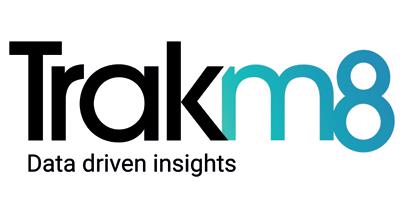


The company works closely with Network Plus to ensure it gets the best out of the technology. Track King carried out the installation of the RH600 devices and provides ongoing support to Network Plus. The company has implemented speeding league tables and introduced a pointsbased system. Employees who receive points undergo training to help them reduce the frequency of speeding events.
Since installing the RH600 4G telematics cameras across its 500-strong fleet of LGVs and cars, Network Plus has reported a 39% fall in accidents involving its vehicles. The company has also seen speeding incidents decrease by 35%.

Network Plus director Sam Atherton says: “The ability to easily analyse driver behaviour against a range of metrics enables us to quickly intervene when there is an issue. This helps us to reduce the risk of an accident for our colleagues and for other road users. Alongside health and safety, improved driver behaviour has a positive effect on customer satisfaction.”
Network Plus 500 vehicles in its fleet –mixture of LCVs and cars; specialist in the provision and maintenance of essential water, gas, electricity and telecommunications supplies; n trusted contractor for national utilities companies.
In recent years, we have seen the introduction of electronic tachos, while smart tachos have been mandatory in new HGVs since June 2019.
Smart tachos offer opportunities to make better operational use of data collected, while the disruption of Covid-19 highlighted their value in collecting data in a safe, socially distanced way.

So making the most of the latest technologies would appear to be common sense – but are all operators doing so?
When it came to smart tachos, more than half of respondents said at least 50% of their trucks were now fitted with the technology, with 21% having kitted out their entire fleets.

This was significantly up from the same survey in 2021, which revealed that only 38% of operators had fitted smart tachos to at least half of their fleet.


Surprisingly, there wasn’t much movement on those firms that have yet to embrace smart tachographs, with 28% this year versus 27% in 2021 having none on their fleets.
And the figures revealed that this percentage rose to 38% of those operators operating 10 or fewer trucks, suggesting that smaller firms were likely to be running a larger proportion of pre-2019 trucks than their larger counterparts.
Supported by
Regardless of whether using manual, digital or smart tachographs, operators made sure they looked for key attributes from suppliers.
In a question posed by sponsor TruTac, we discovered that the key requirement from a quarter of respondents was a system’s analysis capability. This was closely followed by ease of data download (21%) and, of course, value for money (19%).
Remote downloading of tachograph data rose steeply between our surveys in 2019 and 2021, likely fuelled by the social distancing regulations and move towards home-working for businesses during the Covid-19 pandemic.

Transport managers can now work away from their business depot and still have instant access to essential drivers’ hours data at the click of a mouse. Likewise, a vehicle could be at the other end of a country and tacho data is still immediately available when required.


Our data revealed a leap from 28% of operators using a system for remote data download in 2019, up to 46% in this most recent poll.
When it came to how firms analysed their data, our survey showed that 53% of operators opted for a third-party to do this on their behalf, while one-third preferred to do this in-house. And 14% of operators did not drill into the data at all, up from 4% in last year’s survey.
This year’s poll showed an average of 79% of data analysed, compared with 86% in 2021: 69% analysed all their data, while 6% explored up to three-quarters of their data, and 12% up to half.
For those operators that have taken the plunge with smart tachographs, we asked what the key benefits were from using the latest technology.

Better real-time data was the top answer for 42% of respondents, while reduced administration time came a close second, at 39%. Fewer roadside checks was also noted by one-in-five operators (19%).
However, more than one-third of operators (35%) said they had not discovered any business benefits from using smart tachographs.
A recent industry survey indicates that a quarter of fleet managers believe analysis capability to be the most important factor when choosing a tachograph services provider.
Research company Edge Insight asked 234 fleet managers a range of questions regarding selection criteria and found, in addition to this key analysis requirement, ease of downloading, value for money and excellent helpdesk support also rank highly.
This is certainly the case for freight distribution specialist Trucklink EU, which, says the company, has gained Earned Recognition (ER) status since using tacho analysis software and support services provided by Microlise company TruTac.

Trucklink depot manager Paul Whelan says: “For the most part, ER was made possible by TruTac. For example, we download remotely all driver and vehicle info and send the verified tacho data directly to TruTac for analysis, so we can view the results via automated email reporting. This gives us complete visibility and insight, enabling immediate corrective actions to be taken and forward planning to be done.”
As part of TruTac’s integrated TruControl package, Trucklink EU uses TruAnalysis,
Supported byTruTac MD Jemma James says: “The importance to fleet managers of accurate tachograph analysis is confirmed by this useful survey. Raw information regarding drivers and vehicles is one thing, but meaningful data analysis backed up by first-class support takes it to another level and is what makes all the difference when it comes to efficient fleet management and compliance control.”




Trucklink says that with a mixed fleet of more than 60 vehicles, operational information such as driver hours and tacho data could normally be difficult to monitor, interpret and retrieve.
However, with TruTac’s compliance control software and Earned Recognition under its belt, the company says it’s never been so on top of compliance-related data.
TruTac is a part of the Microlise Group. microlise.com/about/
For more information, contact: Jemma James, MD: jemma.james@trutac.co.uk; 02476 690000; 07894 475074; trutac.co.uk
TruChecks, TruLicence, TruView and TruFleet – each module playing a dedicated role in assisting day-to-day vehicle and driver control.